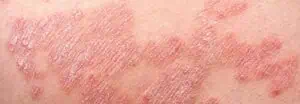What is Tretinoin Cream used for?
Tretinoin is a form of vitamin A that helps the skin renew itself. Tretinoin topical (for the skin) is used to treat acne, smooth rough facial skin, and reduce the appearance of fine wrinkles and mottled skin discolouration. Tretinoin topical may also be used for purposes not listed in this guide.
What should I expect from Tretinoin Topical 0.05% Cream
Thusingrtant thing to remember is Tretinoin 0.05% Topical Cream may be an irritant and, therefore, your skin may become inflamed and peel if you use the preparation too liberally. Your skin will, however, build up a tolerance to it with time. It is, therefore, appropriate to start to use the product intermittently and this could either be for three or four hours a day or just overnight twice a week. This depends on which regime is easier for you and the advice provided by your Dermatologist.
If you use the Cream intermittently for approximately two weeks you can then start to use the preparation overnight every other night and, assuming you get no untoward reactions in terms of redness or dramatic peeling, you can start to use it overnight eveskincareafter another two weeks. This regime usually allows you to build up restarte to the Tretinoin 0.05% without too much local irritation. You should not apply the product to any treated areas of skin until they have healed completely. If you develop any reaction, stop using the Tretinoin 0.05% and continue your normal skin care routine and seek the advice of your Dermatologist. The reaction will usually settle over a few days and you can then re-start more cautiously as advised by your Dermatologist.
What Side Effects can Tretinoin Topical 0.05% Cream cause?
Like any medication, Tretinoin Topical 0.05% Cream can cause side effects. Check with your Dermatologist immediately if any of the following side effects occur:
More common
- Burning, stinging, peeling, redness, or unusual dryness of the skin (severe)
Less common
- Dryness, pain, redness, irritation, or peeling at the application site
Some side effects may occur that usually do not need medical attention. These side effects may go away during treatment as your body adjusts to the medicine. Also, your Dermatologist may be able to tell you about ways to prevent or reduce some of these side effects. Check with your Dermatologist if any of the following side effects continue or are bothersome or if you have any questions about them:
More common
- Burning, itching, stinging, scaling, or redness of the skin
- chapping or slight peeling of the skin (mild)
- darkening of the skin
- lightening of normal skin colour
- lightening of treated areas of dark skin
- redness of skin (mild)
- unusual dryness of skin (mild)
- unusually warm skin (mild)
Other side effects not listed may also occur in some patients. If you notice any other effects, check with your healthcare professional.
As Tretinoin 0.05% may make your skin slightly more sensitive you should be cautious about using other preparations containing Vitamin A. You will also need to be more prudent about sun protection and sun avoidance. If you are travelling to any hot country, your Dermatologist would usually suggest you stop using Tretinoin 0.05% 7-10 days before your departure. Resume and use cautiously when you return or as advised by your Dermatologist.



